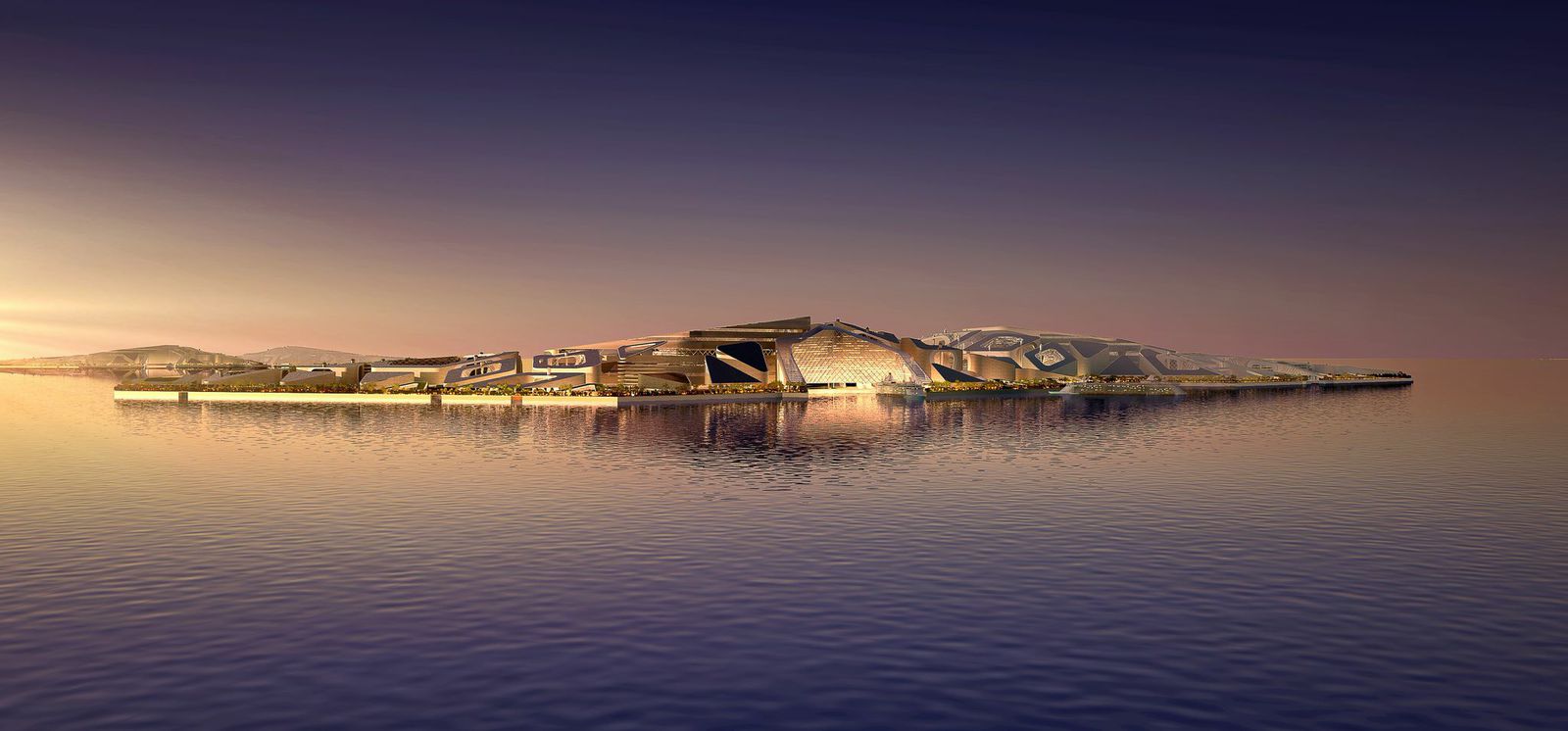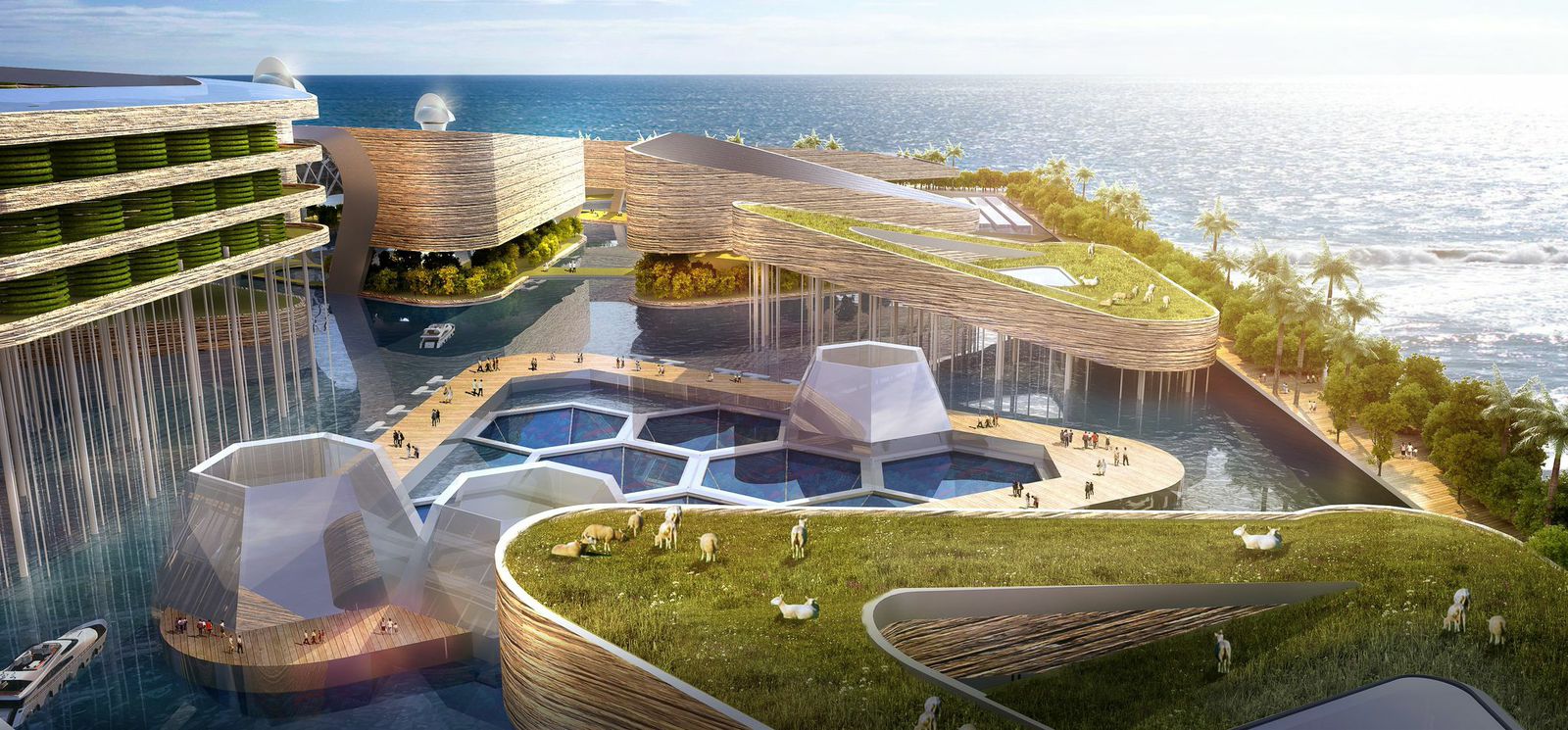As China faces large urban populations and the need for new living solutions, a new idea has been floated—literally. AT Design Office has proposed a design for a floating city, which was commissioned by the China Communications Construction Company.
To create the new city, a 10-square kilometer island would be made out of prefab blocks. The same type of blocks are currently being used by CCCC to build a bridge between Hong Kong and Macau. In theory, the new floating city would have all the features of a normal city.
“People won’t need to commute for jobs on land,” Anthony Phan, an architect at AT Design Office, told Fast Company. “Work, apartments, entertainment and parks are all provided in the floating island.”
Green spaces surround the island above and below the water; the two layers are connected by vertical gardens. These gardens will be a place to board submarines to get from block to block in the city, and tunnels will connect buildings with pedestrian paths and roads for electric cars.
AT's design suggests that the island's self-sufficiency will be possible due to tidal energy (which will be used for power), and farms on its edges will provide food for residents. Not only that, the island is set to have its own factory to produce hyper-local goods.
The island, in theory, will rise as the sea level rises with climate change. Some of the components are set to be tested as soon as next year.
Check out the futuristic design below. All renderings courtesy of AT Design Office.
Related Stories
| Aug 11, 2010
PBK, DLR Group among nation's largest K-12 school design firms, according to BD+C's Giants 300 report
A ranking of the Top 75 K-12 School Design Firms based on Building Design+Construction's 2009 Giants 300 survey. For more Giants 300 rankings, visit http://www.BDCnetwork.com/Giants
| Aug 11, 2010
Turner Building Cost Index dips nearly 4% in second quarter 2009
Turner Construction Company announced that the second quarter 2009 Turner Building Cost Index, which measures nonresidential building construction costs in the U.S., has decreased 3.35% from the first quarter 2009 and is 8.92% lower than its peak in the second quarter of 2008. The Turner Building Cost Index number for second quarter 2009 is 837.
| Aug 11, 2010
AGC unveils comprehensive plan to revive the construction industry
The Associated General Contractors of America unveiled a new plan today designed to revive the nation’s construction industry. The plan, “Build Now for the Future: A Blueprint for Economic Growth,” is designed to reverse predictions that construction activity will continue to shrink through 2010, crippling broader economic growth.
| Aug 11, 2010
New AIA report on embassies: integrate security and design excellence
The American Institute of Architects (AIA) released a new report to help the State Department design and build 21st Century embassies.
| Aug 11, 2010
Section Eight Design wins 2009 Open Architecture Challenge for classroom design
Victor, Idaho-based Section Eight Design beat out seven other finalists to win the 2009 Open Architecture Challenge: Classroom, spearheaded by the Open Architecture Network. Section Eight partnered with Teton Valley Community School (TVCS) in Victor to design the classroom of the future. Currently based out of a remodeled house, students at Teton Valley Community School are now one step closer to getting a real classroom.












